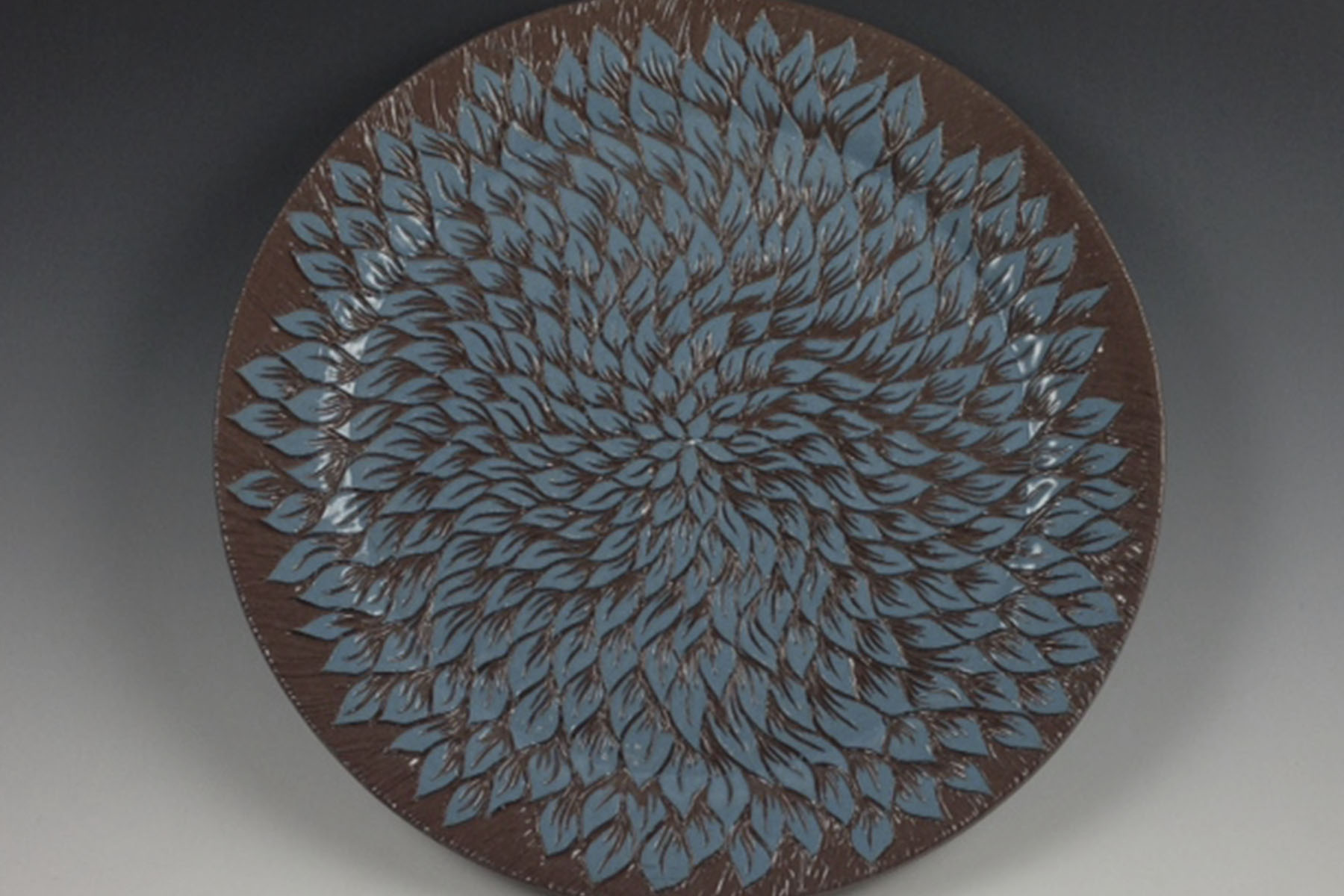I was young, maybe nine years old, when I first visited the C.M. Russell Museum in Great Falls, Montana. Immediately upon entering I perceived I had entered some venerable space. I had never been to an art museum before, not that I could recall, and the milieu of this one captured me instantly. The carefully choreographed paths of light, the reverberating silence, and the art — so much art! — flooded my senses, overwhelmed me, left me dumbfounded. The feeling I experienced I later came to compare to the spiritual tremors that engulf one who has stepped foot in an old world cathedral. It left a discernible impression on body and soul. My jaw was left agape with wonder.
Among the many treasures, I was drawn to one of Russell’s bronze sculptures. It sat on a pedestal and I slowly circled it, taking in its lines, it angles, its texture. Light poured over it, but the patina soaked it in, held it, and gave the frozen figure a lifelike inner glow. The Bronco Twister. If I’d had the courage to reach out to touch it I’m sure I would have felt its beating heart. It was alive to me, and it left its brand upon my memory.
On the drive home I became a student of Russell, flipping the pages of a book containing his work with an obsessive fervor. My parents noticed the effect the museum had had on me and purchased the book in the gift shop on our way out. It became my textbook, and I studied each brush stroke with the commitment of a devotee. I made my parents promise we would return.
And we did.
Most artists recall a pivotal moment in their lives when they were captured by a specific work of art. Most are able to recall, with visceral detail, how it is they felt at that moment — how it is that work of art changed them. Usually it is something akin to an awakening. Envision opening your eyes for the first time and seeing. Picture how wondrous everything would appear. Light, shadow, color — oh, so many colors! Imagine the hunger that would arise, the desire to see, to see more, to see everything there is. The act itself would suddenly become requisite, necessary to further living. It is the same with the stories artists tell about those works of art that first spoke to them. Something about the experience let loose some formerly interned desire, and a conviction to lead a life as a creator.
For Shawna Cargile-Pickinpaugh that moment came when she first saw Andrew Wyeth’s painting, Christina’s World.
“From that moment on all I wanted to do was make art,” she told me.
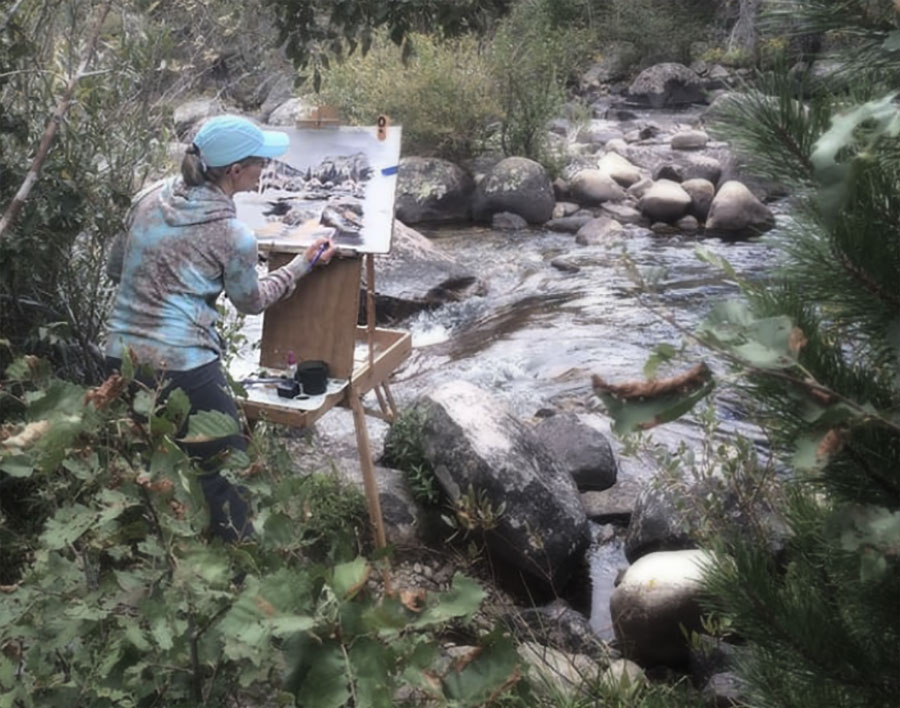
Shawna was born and raised in Wyoming. She spent her summers in her family’s cabin in the Wind River Mountains, and soaked in the splendor of their natural beauty. After receiving her BA from the University of Wyoming (followed later by a Masters in Education from Grand Canyon University), she began work as an art educator in the public school system. Teaching students the ins-and-outs of creativity while bestowing in them a sense of historical significance and appreciation for art was rewarding for her. “I have quite a few students who continue feeding their passion for art and are now working in the art world,” she said. “I also know there are a lot of my students who appreciate and purchase art.” The job itself provided her an opportunity to expand her own horizons as well. “In order to teach a range of mediums you have to master those mediums at a level that provides growth to students.”
“I feel being prepared to teach my students has been the best teacher of all,” she said.
But as time passed, and despite the rewarding nature of her work, Shawna realized something wasn’t quite right.
She was raising a family and had a full-time job she was passionate about. She had stability. She had a life filled with meaning. By all accounts she was a success. What she felt didn’t seem to make sense — a discernible wave of anxiety was weighing her down. “For many years I struggled,” Shawna said. “But I could not figure out why I was feeling this way.”
She sought to understand her anxiety — to get to the bottom of why she felt like something was missing in her life. Then, Shawna began scheduling time for herself, to create artwork that was all her own. “Gradually my feelings of anxiety started to diminish,” she said. “I realized what was missing was my own art as part of my life.”
Nothing replaces hard work.
— Shawna Cargile-Pickinpaugh
After that, Shawna made it a point to maintain a studio practice of her own. She began rising at 4:30 am to work on her personal art before heading to school. Her persistence and dedication began to pay off. Her creations began to sell, and she began committing more of her time to another discipline: pottery. “I found that painting was difficult because it required large amount of time,” she said. “But with pottery I could create and produce work — and see instant results.”
One of Shawna’s pottery pieces sits in my own home. It is displayed on an end table next to the entryway. Lashed to its top with sinew bindings is a three-pronged antler which serves as its handle. The glaze is a muted blue, almost gray, with notes of burnt umber around its upper edge. At its base is a mountain range sculpted into the clay, colored that same burnt umber. The mountains wrap the bowl Ad infinitum, a landscape that goes on, and on, and on, endlessly.
It seems to me that this piece is a reminder of the cyclical nature of the world, an acknowledgment of the clay from which all things rise, and to which all living things must return. It is a reminder, also, of the temporal existence we lead and, perhaps, a subtle encouragement to take advantage of what time we have. I look at that piece and feel a sense of wonder. When I touch it, if I must, I do so carefully, and with a sense of deep respect.
It is the same care I would take if I had to handle a masterwork by a renowned artist like Russell — or Andrew Wyeth.
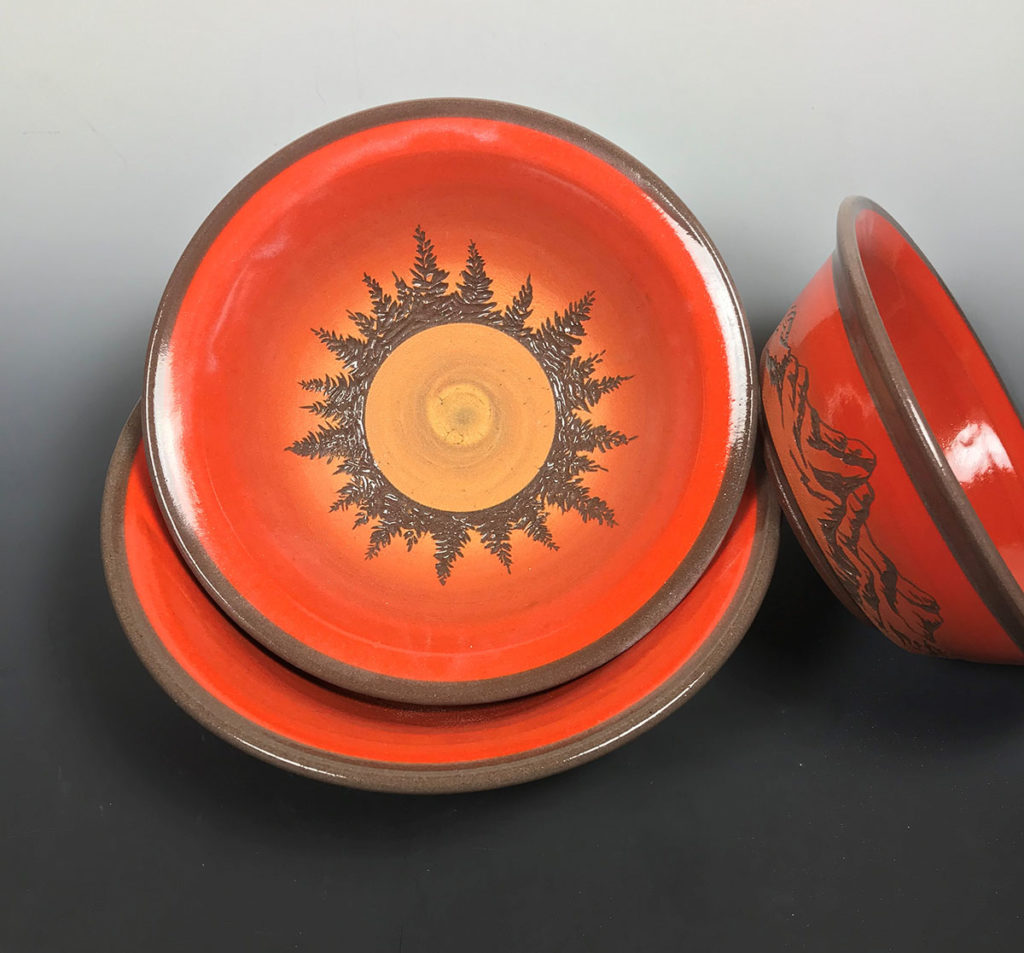
Christina’s World is among Andrew Wyeths’s most well known works of art. It depicts a young woman (Christina, the namesake of the piece), dressed in a faded pink dress, sitting with her back to the viewer in the lower left side of the composition. She is leaning, one hand firmly planted on the earth, the other reaching forward, as if she is about to start crawling. In the distance, at the upper right-hand side of the painting, sits a bleak gray farmhouse. The young woman faces the farmhouse, a vast gulf of grassland lays between her and it.
A wispy psychological haze exudes from Wyeth’s painting. Its unsaturated tones seem to sap the world around the viewer of any color. There is a weight to the painting as well, an emotional burden that comes from sitting in front of it. The mind of the viewer becomes overcast, somber. Even without knowing the story of the girl who inspired the piece, one is still left with a deep understanding of her struggle. Those who’ve seen it always remember having seen it.
It was the same with Shawna.
“When I was in the 6th grade my art teacher showed our class the painting,” Shawna said. “I remember looking at that painting and saying to myself, I’m going to paint…I’m going to be a painter!”
The force of Wyeth’s work had spoken to her. It had awoken in her the desire so many artists have known, a fiery yearning to create, to capture and hold that same transcendental power that had reached out to them through the weave of a canvas or the crags of a sculpture. From that point on Shawna was driven, and the recognition she began to receive for her work spurred her even further on. She had experienced the potential of artistic expression, and she had been transformed.
The effects of that transformation have lasted even to this day.
“My husband would describe my passion as both a blessing and a curse,” Shawna said.
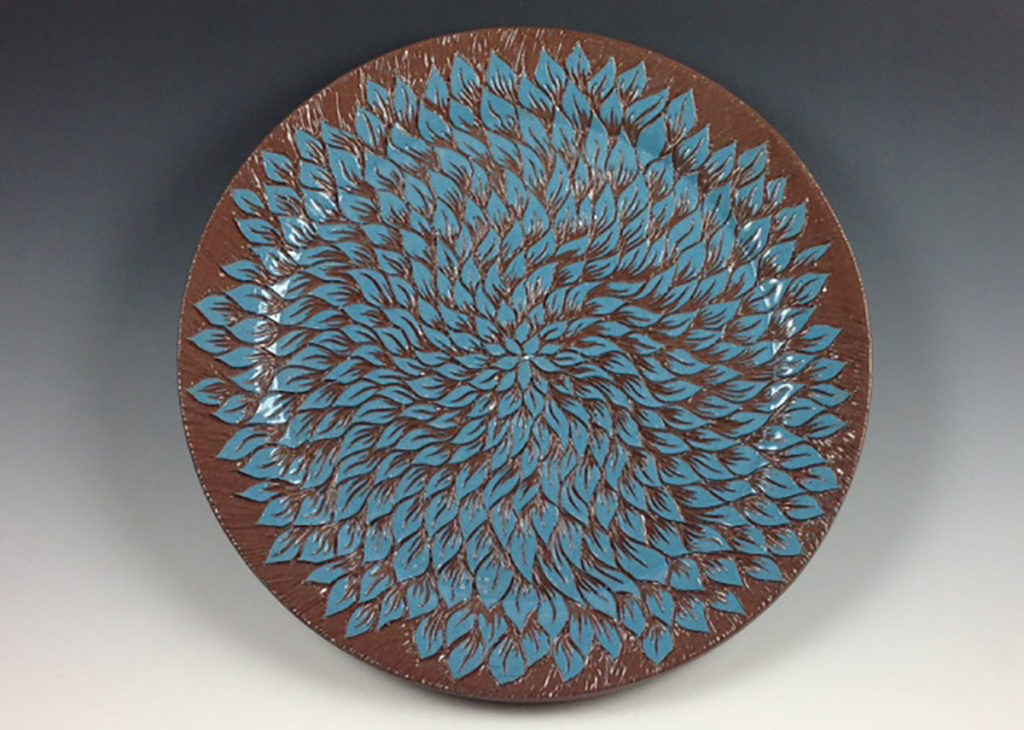
In the study of phenomenology, the science of direct experience, there is a concept known as alterity. Alterity is, simply put, a term used to describe ‘Other-ness’, or that which is separate from the individual. Much of phenomenological study revolves around the ways humans ‘dialogue’ with alterity — the success of which can be described in terms of attunement (for more on attunement, see my article entitled How Art, Good or Bad, Can Make the World Better). Thanks to the pioneering work of philosophers like Martin Buber, we understand that the interaction, relationship, or dialogue with alterity is ever-present in our lives — we are always engaged in it, whether we realize it or not. Managing this interaction is one of the primary functions of the mind.
The significance of this as it pertains to art lies with the fact that the work artists do is meant to produce unique phenomenological events — it is the purpose of art to provoke encounters with alterity, to stimulate a conversation. Art, at its most elemental, offers us a mirror, serving to illustrate the natural workings of our own mind and how we relate to the world.
When we understand that our interaction with the world outside ourselves is a kind of dialogue, it’s easy to for us to recognize that our interaction with art is a form of conversation. Propagandists have long known this, and modern marketers attempt to take advantage of it, seeking to convince those they are in ‘conversation’ with to agree with their particular notion — whether that is to buy a certain type of toothpaste or support a specific political leader. Luckily, propagandists and marketers lack sufficient scientific knowledge to accurately predict the results of their campaigns. This is largely due to the fact that choices people make are impacted by a complicated web of interactions that uniquely represent the makeup of their individual lives — all of which make it impossible to anticipate an outcome with any high level of certainty. But that doesn’t diminish the power art has as a vehicle of communication. Art has a way of speaking to us, a way of bridging the gap of perception — a way of shifting our perspective and providing a discernible connection to alterity.
And the results of that communication can be extraordinary.
Art is an integral part of my life.
— Shawna Cargile-Pickinpaugh
Take, for instance, my reaction to that Russell sculpture, or Shawna’s to Christina’s World. The relationship we had to these pieces — the way in which they spoke to us — resulted in consequential transformations, driving us both to pursue art as a career and a lifelong endeavor. This kind of powerful shift happens to many people, across many countless interactions, and across all walks of life — but rarely do you find a more forceful conduit than art (be it literature, poetry, visual art, film, etc.). Art is, by design, meant to produce an affect. It is meant to create a dialogue with those that consume it. (It then follows that the moral responsibility of artists is to strive to produce art which encourages meaningful, positive change in those who interact with their work. While predicting the response from an interaction is impossible, artists still should align their intentions and aim to create work with that responsibility in mind.)
But today, few recognize the significance art can play as a driver of change, and Shawna has seen this firsthand in the public school system.
Over the years she has encountered a number of people who refuse to believe art could possibly be a “serious career”. “As an art educator I have had parents discourage their child from becoming an artist because of their perception,” she said. “I see this with others who don’t really understand artists and art in general.”
Her solution?
It’s one befitting a lifelong educator: education.
“The lack of education about the arts, its value, richness and potential for self expression is a problem for those of us working as artists and advocates of the arts,” Shawna said.
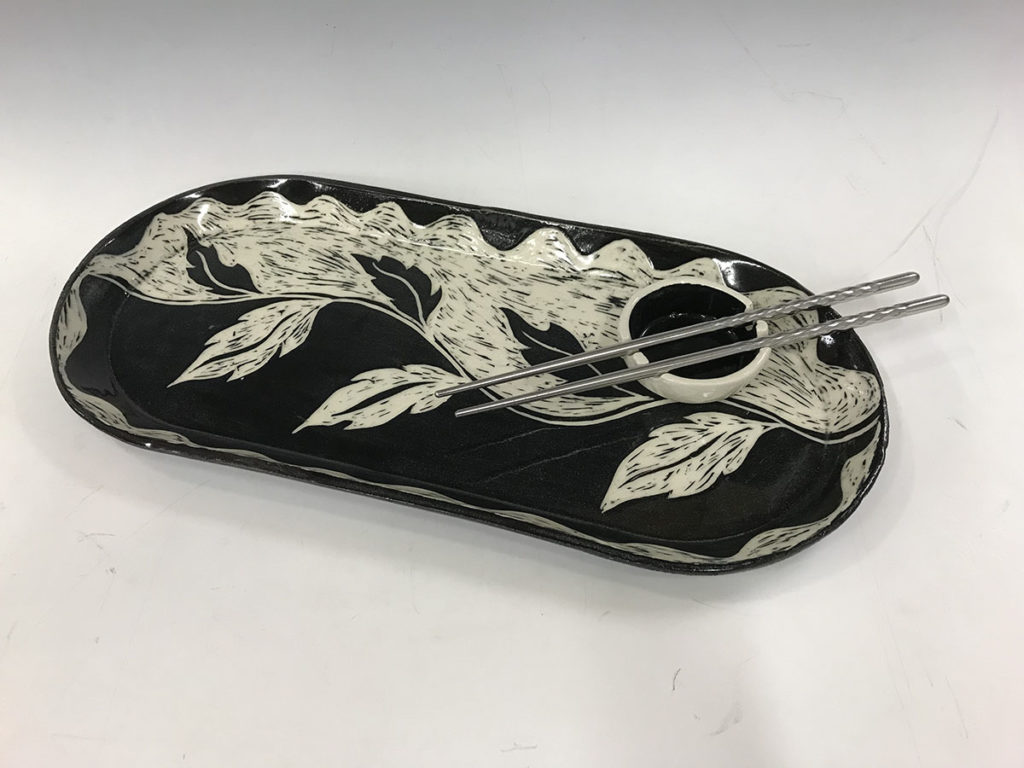
Through her own lived experience Shawna has known the value of education. She has a high level of appreciation for exploration and skill-building, and understands how vital these are to building a solid foundation in one’s art practice. But she stresses to her students that in order to live up to one’s potential, one must be willing to put in the work. “Nothing replaces hard work. If you think about how long it takes to become a ‘master’ of anything you realize that it’s the time growing, learning, reinventing, failing and starting over again that creates growth,” she said. One of her favorite quotes is from the French novelist, Émile Zola, who said, “Art is nothing without the gift and the gift is nothing without the work.”
“This is so true in my life,” Shawna said. “Once I started scheduling time to make art and making it a priority in my life, not only was I happy and complete, I was making a lot of art!”
As of her retirement from teaching in May of 2019, Shawna’s rushed early morning work sessions are over. Her focus and her time now revolve entirely around creating work. “Art is an integral part of my life, it continually pulls and stretches me in new and exciting directions,” she said. “It is the way I relate to the world.”
My greatest legacy is the students I have had.
— Shawna Cargile-Pickinpaugh
And her own learning and development is far from over.
“I have been experimenting with a new medium called Quink,” she told me. “I am using watercolor techniques with Quink and have been excited about the dramatic effects I am getting in my paintings.”
The results are indeed stunning. In 2018, during a showcase of artwork during the Art in the Park event at Sinks Canyon State Park, I was stopped in my tracks by Shawna’s work. I couldn’t recognize the technique and sought her out. As it turns out, the shifting tones and rich coloration were the result of the unique properties of Quink. With the typical enthusiasm of a longtime educator, Shawna mentioned she had been thinking about teaching a class with the medium — but before she could commit to it she wanted to spend more time with it, to master it as best she could.
Her intent seemed especially apt — a desire to pass along her knowledge, but only the best of it. An educator, tried-and-true, with a wish to prepare those who came after her only in the most outstanding way.
“I feel my greatest legacy is the students I have had in my art classes for the last 32 years,” Shawna told me.
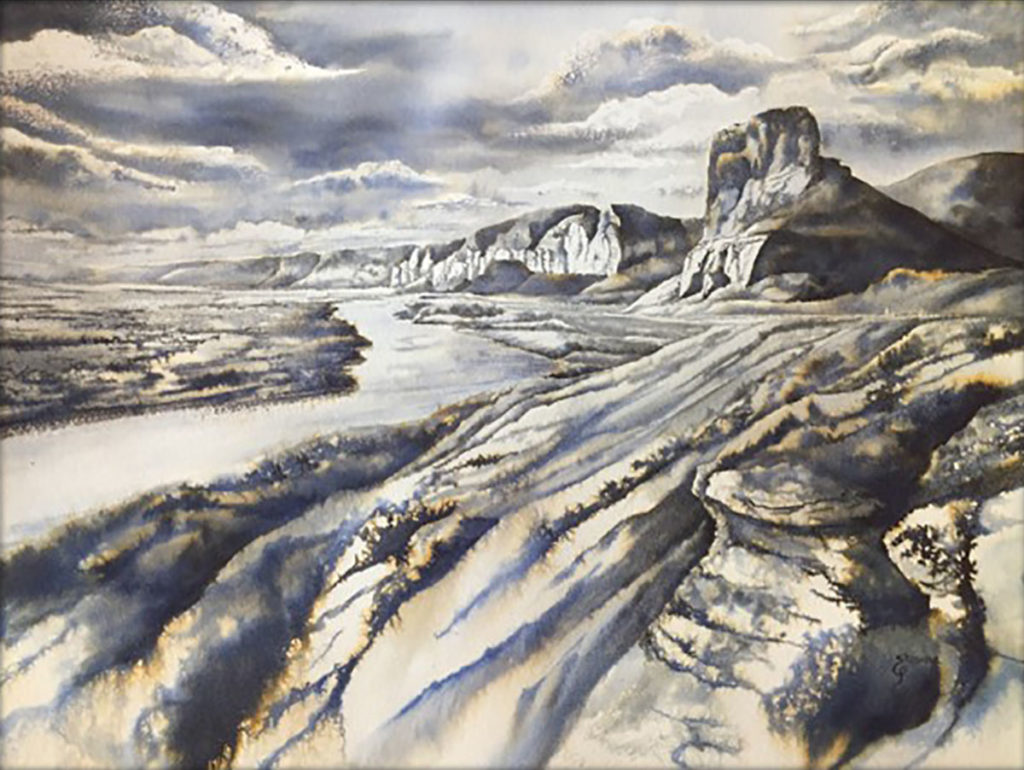
When I finally returned to the C.M. Russell Museum it had been over a year since that first momentous visit. On the drive I brought along the book of Russell’s work I had been using as a study guide in the intervening months. It was pristine, without a mark or a crease to be found, so perfect I could have returned it to the gift shop as good as new. I had pored over its contents obsessively for over a year, but I so revered the work that I had taken great pains to preserve the pages upon which it was reproduced. I felt Russell deserved as much from me.
On the museum grounds I stood outside Russell’s studio, a long log cabin with bright strokes of chinking that ran its length. A bluebird sky stretched overhead and the morning sunlight warmed my shoulders. The branches of a nearby coniferous tree shifted slightly in a murmuring breeze.
A familiar sense of veneration washed over me, and I was comforted.
It felt as though I had returned to my teacher, the one who had first whispered to me the secrets of transformation.
The one who started the conversation.
The one who inspired a lifelong journey.
It felt right.
Shawna Cargile-Pickinpaugh’s work can be found at Alchemy Artist Cooperative in Lander, Wyoming and online at Art of the Winds Studio.
Support Regional Arts Coverage!
The Featured Artist article series was conceived as a way to showcase the stories of artists and creative people residing in the regional West while contributing to a wider conversation about creativity and the world of art.
To ensure this work continues, please consider supporting it.
Your contribution provides vital assistance and serves to demonstrate your appreciation for the work regional artists and creative people do to keep our communities vibrant and full of imaginative light.
If you enjoyed this arts coverage, donate below to keep the content coming! Learn more about becoming a supporter.
To be featured in an upcoming Featured Artist article, or to nominate someone, please Contact Me.
Nick Thornburg is a multidisciplinary artist and writer. Follow Nick and share the work on social media. Subscribe to his mailing list to keep up-to-date with upcoming features and other news.
Stay Creative.
